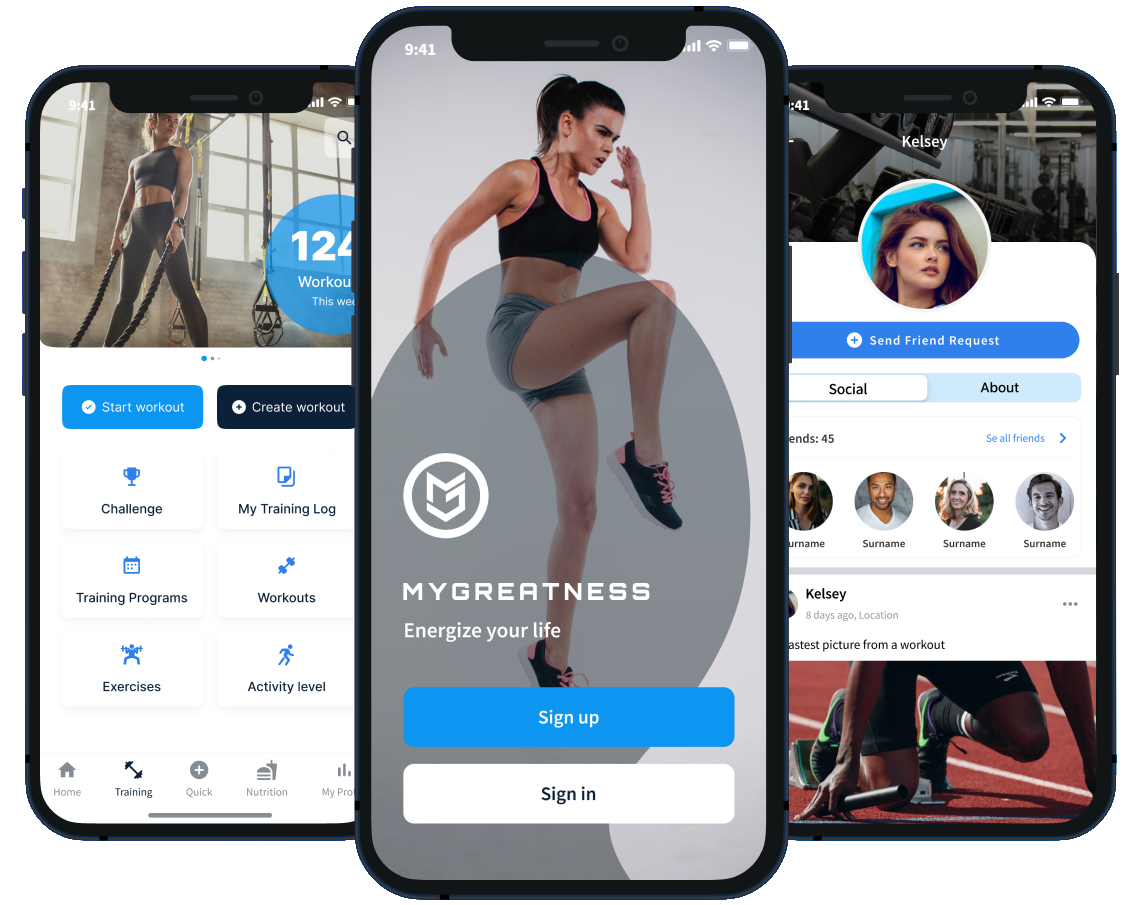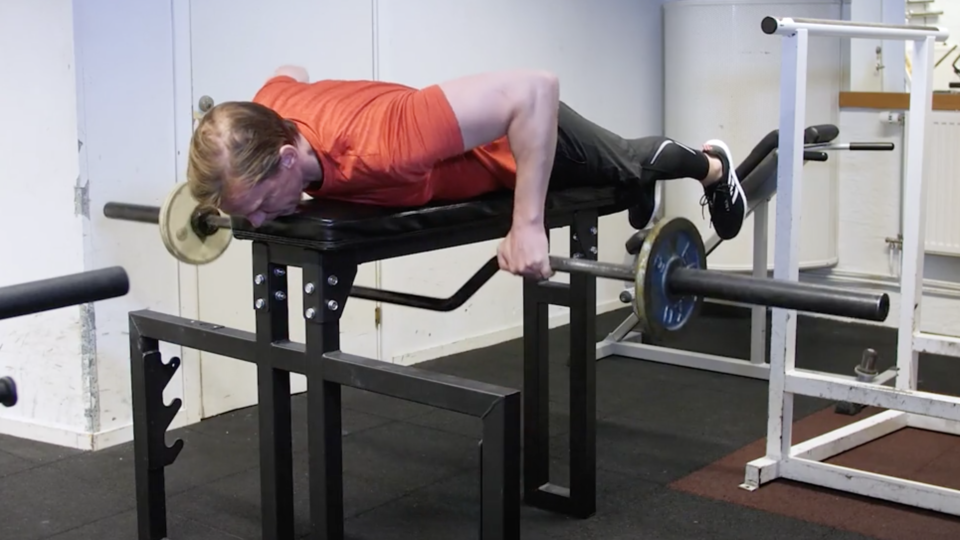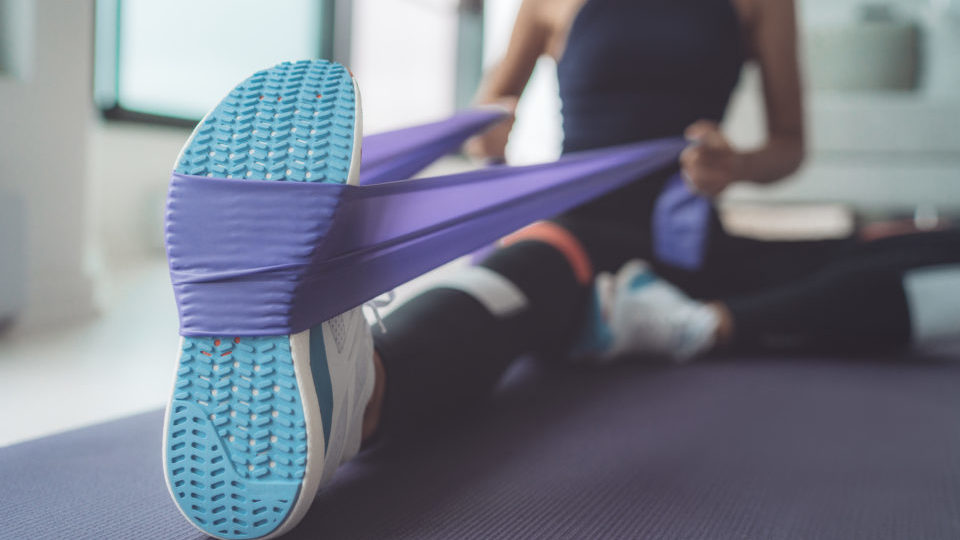Exercise Details for T-Bar Row
-
Primary MuscleLats, Traps, Middle back
-
Secondary MuscleBiceps , Rear Delt
-
EquipmentMachine
-
LevelAverage
Why you should do T-Bar Rows?
T-Bar row is quite similar to barbell rowing, but you can use a different grip. The exercise activates several muscles in the back and provides good muscle growth, even if it can be a little difficult to perform.
The rowing activates large parts of the back. You can vary the width of the grip and the position of the hands, which means that different muscles can work differently. A narrow grip focuses more on the lats, the side muscles of the back, while a wider one shifts the focus to the upper part with traps and rhomboids. The more you manage to lean your upper body forward towards the floor without losing your neutral back, the more your Lats will get to work. A more upright position puts the weight on your upper traps.
Starting Position
The exercise is a bit tricky to do initially, so use lightweight and get in shape before you start lifting heavy. Some gyms have a machine that is intended for T-bar rowing only. Use it if you can, but if the machine is missing, you can use a standard barbell with a v-grip. Just insert the barbell into a corner or a movable base plate (land mine). Feel free to use weights that are not that big in diameter; it is better to run 2 5 kilo weights than run an enormous 10-kilo weight. This is because the considerable weight will hit your chest earlier in the movement than the smaller ones when you perform the exercise.
Stand a little more than shoulder-width apart with one foot on each side of the bar high up on one end of it. Bend your legs. Pull back your shoulders, and pinch the shoulder blades together, push the chest forward. Lean forward by first pulling back your hips and making sure your body weight is in the middle of your foot or heels. It would help if you did not get on your toes during the exercise. Your back should be neutral throughout the exercise even though you are leaning forward. The back must not bend during the exercise. Grab the bar below you. A narrower V-grip trains your Lats a little extra, while a wider bar grip will train Traps and Rear Shoulders more.
Performance
With straight arms, pull the bar slightly up from the ground, like a deadlift. Your upper body should come up at about a 30-degree angle to the floor, preferably more minor, but you must be able to keep your back neutral. You should feel that you are in control of your weight. You are now in the start position. It would help if you held this primary position with your body throughout the exercise. It would also help if you did not swing your legs or back up and down; they should remain fixed in this position.
Now pull the weight up towards the body. Begin the movement by pinching the shoulder blades together. Aim to get your elbows as far behind your body as possible when you pull. Remember to do the pull with your elbows and not your biceps. When the weight or bar hits your stomach / lower part of your chest, you have come as far up as you can. Hold in this top position for a few seconds before slowly lowering the weight to the floor again.
You mustn’t just lift with your biceps. By first pulling the shoulder blades together before the arms pull the weight, you connect the back muscles and be very careful. Also, make sure that your elbows get as far behind your body as they can, then you squeeze the muscles in your back.
Wider Grip
The exercise can be performed with a wider grip. You will then focus a little more on the upper back, even if your lats are allowed to work. Have a slightly narrower stance, and let your elbows angle out more from your body as you pull up the bar.
Tips for T-Bar Row
- Bend your legs. Otherwise, you can injure your lower back
- Pull your hips back as you lean forward with your upper body
- Remember that the body weight should be on the heels
- Even though you are leaning forward, your back should remain neutral
- Keep your neck in a neutral position
- The more horizontal your upper body is with the floor in the starting position, the more your lats will be able to work.
- If you stand more upright, your upper traps will work
- A neutral or underhand grip favours Lats training
- An overhand grip that also causes the elbows to be angled out from the body in the lift benefits Traps and Rhomboids
- Do not swing with your back; it should be as still as possible during the movement
- Tense your torso, glutes and thighs during the exercise to stabilize your body






